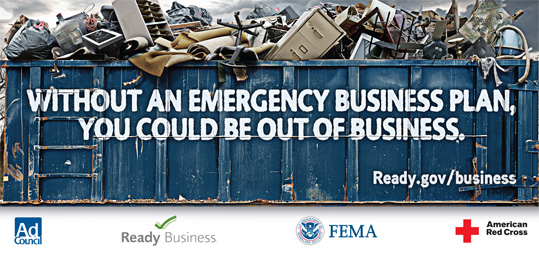Emergencies occur without warning. A fire breaks out in your office. A flood destroys valuable documents. A power outage shuts down your equipment. Your response could be the difference between your business’s survival and a devastating loss. To ensure your company is prepared, develop an emergency response plan and include the following five components.
Plan for People’s Safety
The most important part of your plan revolves around keeping people as safe as possible. Brainstorm different types of emergencies, figure out what to do if they occur, and train your employees; employee communication and readiness is key to a successful outcome. Make sure each person knows his role if a crisis occurs, and prepare for worst case scenarios.
Think about how to conduct a lockdown if there’s an active shooter, evacuate from a fire, shelter in place from airborne contaminants, and where to go in the event of a tornado.
Stabilize the Incident
Plan how to stabilize the incident after it occurs. Well-trained staff members can sometimes prevent large scale losses and tragedies.
Consider training staff in CPR and first aid. Fire extinguishers can suppress small fires; teach employees how to use them. Containment of chemical spills can prevent further damage to the building and environment; make sure you have the appropriate cleaning supplies on hand.
Communication
Businesses large enough to utilize multiple rooms or buildings should invest in a commercial sound system that can relay announcements throughout the building or campus. Regularly conduct fire, earthquake, tornado, or active shooter drills to test the efficacy of the sound system installation and the responsiveness of the employees.
Asset Inventory and Document Recovery
Fires and floods can obliterate vital documents in minutes. Large scale computer outages can eradicate critical data in seconds.
Store digital copies of your business records on a cloud-based system you can access off-site. Keep hard copies of crucial documents in a safe or safe deposit box.
Off-site Location
Secure a secondary location for your business in the event that your building becomes uninhabitable. It doesn’t have to be the perfect location; you just need a place for your employees to gather so they can work together and communicate with clients. If your clients sense everything is under control, they’re more likely to remain patient until your business gets back to normal.
Establishing a business emergency response plan will help ensure the safety of your employees and customers and will help you get your company up and running quickly after a catastrophic event.






